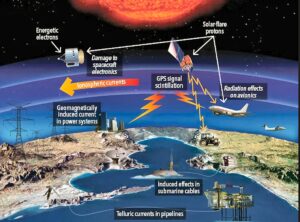WRC-23 Days 11+12: The Future Beckons
Week 3 of WRC-23 has started with an increase in meetings and effort associated with WRC-27/31 proposals, quite a few of which are of concern. Tuesday also saw the proposed change for 23cm get through the next approval hurdle, after some nervous moments.
With meetings over the previous weekend, the start of the week was a bit of a blur. The WRC-23 schedule is now full of overlapping meetings ranging from 8am starts to late into the evenings.
23cm: One key step was the AI-9.1b 23cm draft which will add a new footnote to the allocation. This came up to formal Committee level for its next approval step, whereupon it got some concerning comments, until stability returned. Next step will be two plenary reviews.
Meanwhile extra meetings have been considering 40-50MHz space-borne radar sounders and other late running topics. A compromise on AI-9.1a space weather definition has been reached, that has put greater focus on its next step (see below). The myriad of proposals for 2027/2031 under Agenda Item-10 (AI-10) need to be in fine shape before they are assessed and prioritised at the end of the week, ahead of final week-4 approvals and plenaries.
Future interests/concerns are on:
- Primary allocations and protection for Space Weather sensors
- WPT – Wireless Power Transmission
- Lunar Communications – where greater deployment and protection might impact EME, amateur satellite interests
- Mobile broadband inc 6G – in all sorts of microwave and mmWave bands
 Space Weather: The importance of this has risen, given that major flares can have serious impacts on infrastructure, satellite networks etc. Passive space weather sensors measure either weak signal natural emissions, or ‘signals of opportunity’ such as scintillation of GPS. There are also some very concerning proposals related to active systems across HF and VHF.
Space Weather: The importance of this has risen, given that major flares can have serious impacts on infrastructure, satellite networks etc. Passive space weather sensors measure either weak signal natural emissions, or ‘signals of opportunity’ such as scintillation of GPS. There are also some very concerning proposals related to active systems across HF and VHF.
The expectation under AI-9.1a is the importance of space weather will be formally recognised and that sensor systems will be categorised as being a new subset of the ITU ‘Meteorological Aids’ service, rather than other services such as radio astronomy.
Whilst amateur radio has obvious interests in the observations and forecasts, the concern is that AI-10 may lead to significant constraints if all these systems claim Primary protection for their receivers in a raft of new WRC-27 allocations across HF & VHF.
The RSGB special focus page continues to have regular updates and additional detail. You can find the page at rsgb.org/wrc-23
Category: Front Page News, WRC-23










